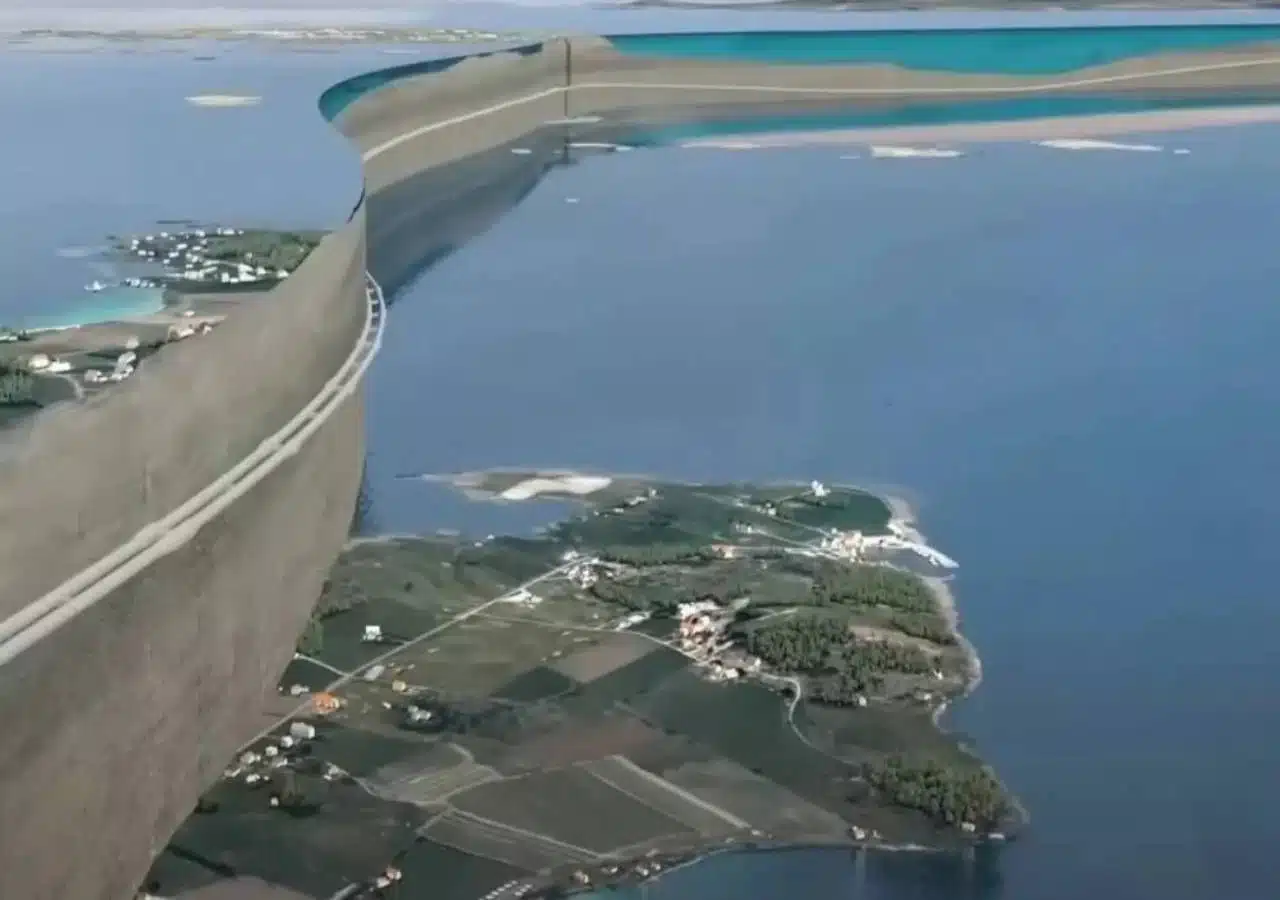The Norwegian government has embarked on an ambitious infrastructure project that will revolutionize transportation across the Scandinavian nation. The Rogfast tunnel represents a monumental engineering achievement, designed to create the world’s deepest and longest underwater road connection. This groundbreaking initiative will transform how millions of travelers navigate Norway’s challenging coastal geography.
Located beneath the waters separating Randaberg and Bokn districts in Rogaland, this underwater marvel will span an impressive 26.7 kilometers. The tunnel will reach depths of nearly 400 meters below sea level, making it an unprecedented feat of modern engineering. Construction teams are working tirelessly to bore through solid rock formations on the ocean floor, utilizing cutting-edge technology to ensure structural integrity and safety.
Revolutionary impact on Norwegian transportation network
Currently, travelers attempting to cross Norway from north to south face significant challenges along the E39 highway. The existing route requires 21 hours of driving time from Trondheim to Kristiansand, covering nearly 2,000 kilometers with seven mandatory ferry crossings interrupting the journey. These ferry connections create substantial delays, particularly during harsh winter conditions when weather forces cancellations and diversions.
The Rogfast project will dramatically reduce this travel time to just 10 hours, eliminating the need for ferry services across major fjords. Motorists will experience uninterrupted travel through four lanes of traffic, with two lanes designated for each direction. The tunnel crossing itself will take approximately 35 minutes, providing a comfortable and efficient alternative to traditional maritime transport.
This transformation addresses multiple transportation challenges simultaneously. Winter weather conditions frequently disrupt ferry operations, leaving passengers stranded for extended periods. Project director Oddvar Kaarmo emphasizes how the tunnel will guarantee safer, more reliable crossings regardless of surface conditions. The enclosed environment protects travelers from harsh Norwegian weather patterns that regularly affect coastal transportation.
Engineering excellence beneath the ocean floor
The technical specifications of this underwater tunnel establish multiple world records in infrastructure development. Beyond being the longest subsea road tunnel globally, Rogfast will claim the title of deepest four-lane tunnel ever constructed. The project requires removing massive quantities of rock and sediment while maintaining structural stability at extreme depths.
Construction methodology involves sophisticated drilling techniques specifically adapted for underwater environments. Engineers must account for immense water pressure, geological variations, and potential seismic activity affecting the tunnel’s long-term durability. The four-lane configuration represents a significant advancement over previous underwater tunnel designs, accommodating higher traffic volumes and emergency access requirements.
Several record-breaking achievements distinguish this project :
- Longest underwater road tunnel for regular traffic operations
- Deepest four-lane road tunnel constructed beneath ocean waters
- Most extensive subsea crossing designed for automotive transportation
- Deepest road intersection constructed below sea level globally
These accomplishments demonstrate Norway’s commitment to pushing engineering boundaries while solving practical transportation challenges. The tunnel’s design incorporates advanced ventilation systems, emergency evacuation procedures, and monitoring technologies essential for safe operation at such depths.
Economic investment and funding structure
The Rogfast project represents a €1.9 billion investment in Norwegian infrastructure, reflecting the government’s dedication to improving national connectivity. Construction began in 2018 but experienced delays due to pandemic-related disruptions and complex geological challenges encountered during excavation. Current projections indicate completion by 2033, marking a 15-year development timeline.
Funding arrangements follow a hybrid model combining public and private resources. The Norwegian government provides 40% of total financing, while toll revenues will cover the remaining 60%. Users will pay approximately €30 for tunnel access, generating sustainable revenue to support ongoing maintenance and operational costs. This financial structure ensures long-term viability without excessive burden on taxpayers.
The economic benefits extend beyond transportation efficiency. Improved connectivity will stimulate tourism between Norwegian cities, facilitate commercial goods transport, and enhance overall economic development across affected regions. The tunnel eliminates costly ferry operations, reducing transportation expenses for businesses and individual travelers alike.
Transforming Norway’s coastal connectivity
This underwater tunnel represents more than an engineering achievement; it symbolizes Norway’s vision for integrated national transportation. The project forms a crucial component of comprehensive highway improvements designed to enhance mobility throughout the country. Once operational, the E39 coastal highway will function as a continuous route without maritime interruptions.
The broader implications include increased accessibility for remote communities, improved emergency response capabilities, and enhanced economic opportunities across previously isolated regions. Tourism patterns will shift as travelers gain easier access to Norway’s spectacular coastal attractions. Commercial transportation becomes more predictable and efficient, supporting business development and trade relationships.
Environmental considerations also factor into the project’s design. By reducing ferry operations, the tunnel decreases maritime fuel consumption and associated emissions. The enclosed tunnel environment minimizes impact on marine ecosystems while providing reliable transportation infrastructure. This approach balances development needs with environmental responsibility, establishing a model for future infrastructure projects in sensitive coastal areas.










